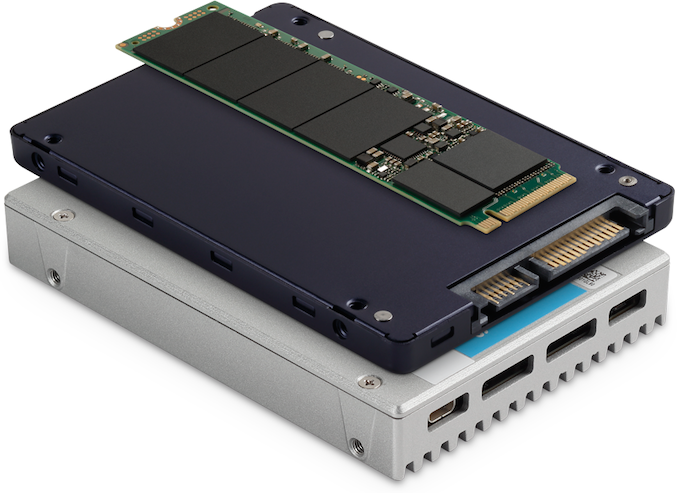Micron: Shipments of 3D QLC for SSDs Nearly Double QoQ as Wafer Starts Cut Again
by Anton Shilov on June 28, 2019 11:00 AM EST
Micron was among the first companies to start mass production and shipments of 3D QLC NAND, so it is not surprising that at present it is among the leading suppliers of such flash memory as well as products on its base. According to the company’s management, bit shipments of 3D QLC for SSDs almost doubled quarter-over-quarter.
Micron uses its 3D QLC NAND for a number of products, including NVMe and SATA SSDs for clients and servers as well as microSD memory cards. In addition, Micron sells 3D QLC to other suppliers of SSDs. Since per-GB pricing of 3D QLC flash memory is very competitive against 3D MLC and 3D TLC, drives featuring this type of NAND are priced very reasonably, which makes them popular among end users. Considering this, it is not surprising that shipments of Micron’s 3D QLC memory for SSDs have increased 75% quarter-over-quarter.
“QLC SSD bit shipments increased approximately 75% sequentially, driven by growth of our consumer NVMe SSDs,” said Sanjay Mehrotra, CEO of Micron.
According to estimates by SK Hynix, TLC NAND accounts for 85% of the NAND flash market today, so it will take 3D QLC quite some time to challenge the proven type of memory in terms of bit shipments.
Micron admits that supply of 3D NAND continues to exceed demand, which negatively affects pricing from a supplier perspective. Transition to 96-layer 3D NAND as well as to 3D QLC memory will inevitably increase the supply of flash in terms of total bit capacity. To that end, Micron plans to further adjust production of NAND in the coming quarter, but it remains to be seen whether this will help as the company will be cutting production (among other things) of its prior-generation NAND devices.
“Since our last earnings call, we have taken actions to further adjust wafer starts from the previously announced 5% reduction to now approximately 10%, which will result in lower supply growth in the second half of the calendar year,” said Mr. Mehrotra.
Related Reading:
- Micron Returns to the microSD Card Market with the Micron c200 Series: From 128 GB to 1 TB
- Micron Introduces 2200 Client NVMe SSD With New In-House Controller
- The Crucial P1 1TB SSD Review: The Other Consumer QLC SSD
- Micron Non-Volatile Update (Q2'18): 96L 3D NAND in H2, 4th Gen 3D NAND Enroute, Sales of 3D XPoint Disappoint
- Micron’s 96-Layer 3D TLC NAND Demonstrated, Qualified by Maxio, SMI
- Boom to Bust: Memory Makers Plan to Cut NAND Flash Production
Source: Micron










11 Comments
View All Comments
Dragonstongue - Saturday, June 29, 2019 - link
As long as they dont "focus" on going all 4D nand (however you want to call it) not until they have reliable performance as good or exceeding previous offerings, not a very small drop in retail price for a major drop in most everything of what makes "flash" what is was meant to be, the newer types are more like "spark" than "flash" memory:P:
Micron (crucial) make some real good stuff (in my opinion) very rare "top end" though far as i remember, never "worst of the bunch, what were they thinking"